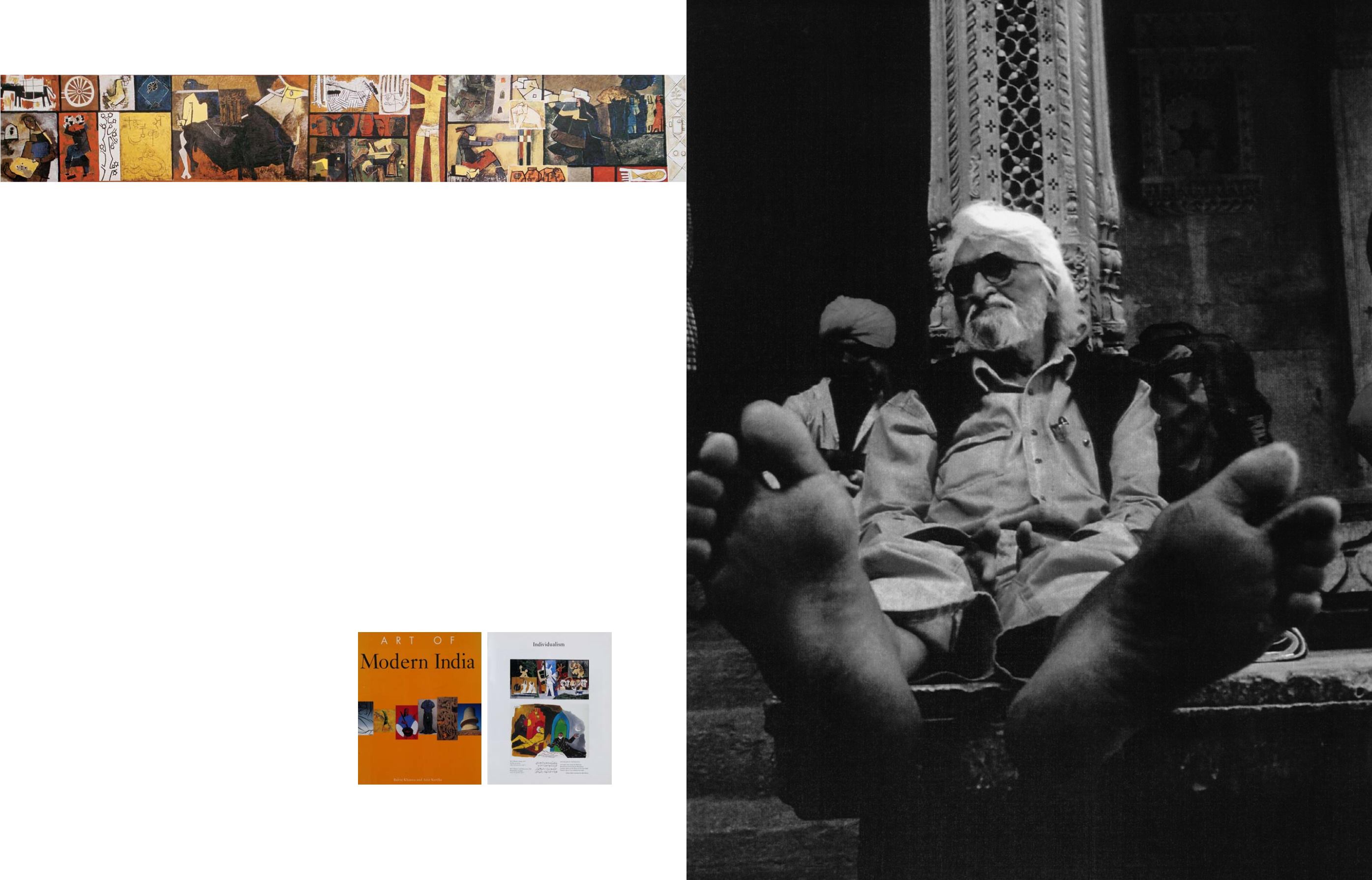

136
Saffronart | Evening Sale
groups are for the most part given personal, not social,
relationships. Each comes robed in its own solitary identity,
the structure of the grouping accentuating the monumental
character of the individual figure. On the deepest level, it is
an identity-seeking art in a world in which, according to Paul
Klee, everything is ambiguous, masked behind the outward
appearance of animal or plant, of faceless powers that are
fluid, mobile, and unresolved—a world that includes all
organized beings and unorganized things, the active forces
of formation, mutation, and destruction. The way to seek
an identity with such a world is through magic, in forms of
intuitive ambiguity. Husain’s human figures are, therefore,
reared in a field of magical signs and symbols, amid rich
metaphors that make connections bridging the elisions
between different planes of reality.” (Richard Bartholomew
and Shiv S Kapur,
Husain
,
New York: Harry N Abrams, Inc.,
1972, p. 58)
In its composition,
Dreams
echoes some of Husain’s murals
and large canvases such as
Zameen
(1955), and was created
in the period following Husain’s rise to celebrity status,
during his most socially and politically charged phase as an
artist. The 1970s witnessed significant political turmoil in
India, including the Bangladesh War and the imposition of
the Emergency. Husain created some of his seminal works
during this decade, including the
Mahabharat
,
and
Durga
series based on Indira Gandhi.
Dreams
followed in the wake
of attention that these works received, and demonstrates
some of the stylistic and formal changes noticeable in
Husain’s vocabulary during that decade.
As one of India’s leading modernists and member of the
Progressive Artists’ Group, Husain left an indelible mark on
the modern Indian art world. He was a largely self-taught
artist who began his career painting cinema billboards and
then making toys, before joining the Progressive Artists’
Group in 1947. Between 1948 and 1955, he travelled
extensively, assimilating the techniques, colours and
styles of Jain and Basohli painting, the sensuous forms
of Mathura sculpture, and the energy and fluid lines
of Chinese calligraphy. His encounter with the works of
European modern masters including Klee, Picasso, Matisse
and Modigliani helped him hone his own intuitions and
perceptions regarding colour, form, line and symbolism.
The present lot can be considered a classic Husain work,
which contains all the essential elements that have
featured in Husain’s extensive oeuvre.
Cover of Balraj Khanna and Aziz Kurtha eds.,
Art of Modern India
, London: Thames
and Hudson, 1998. Present lot illustrated on p. 75
M F Husain,
Zameen
, 1955
Image courtesy of artnewsnviews.com
137
M F Husain
Image © M. F. Husain Foundation


















